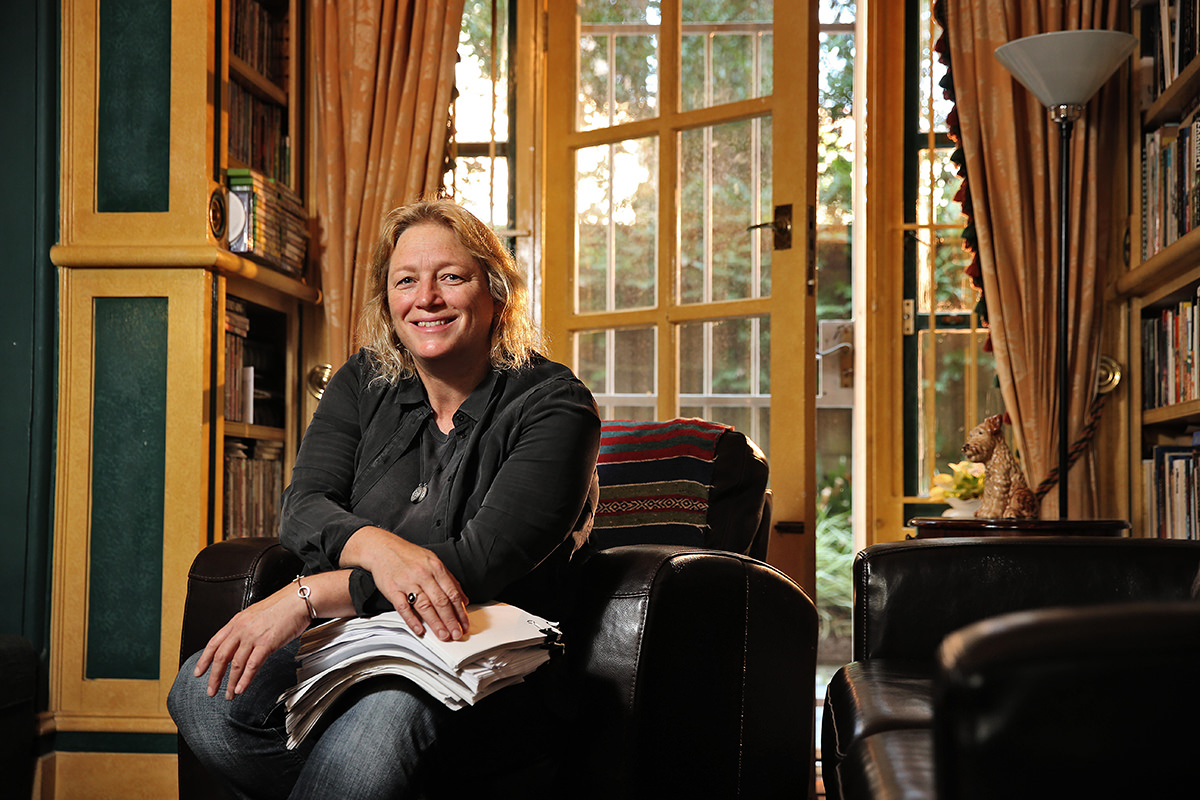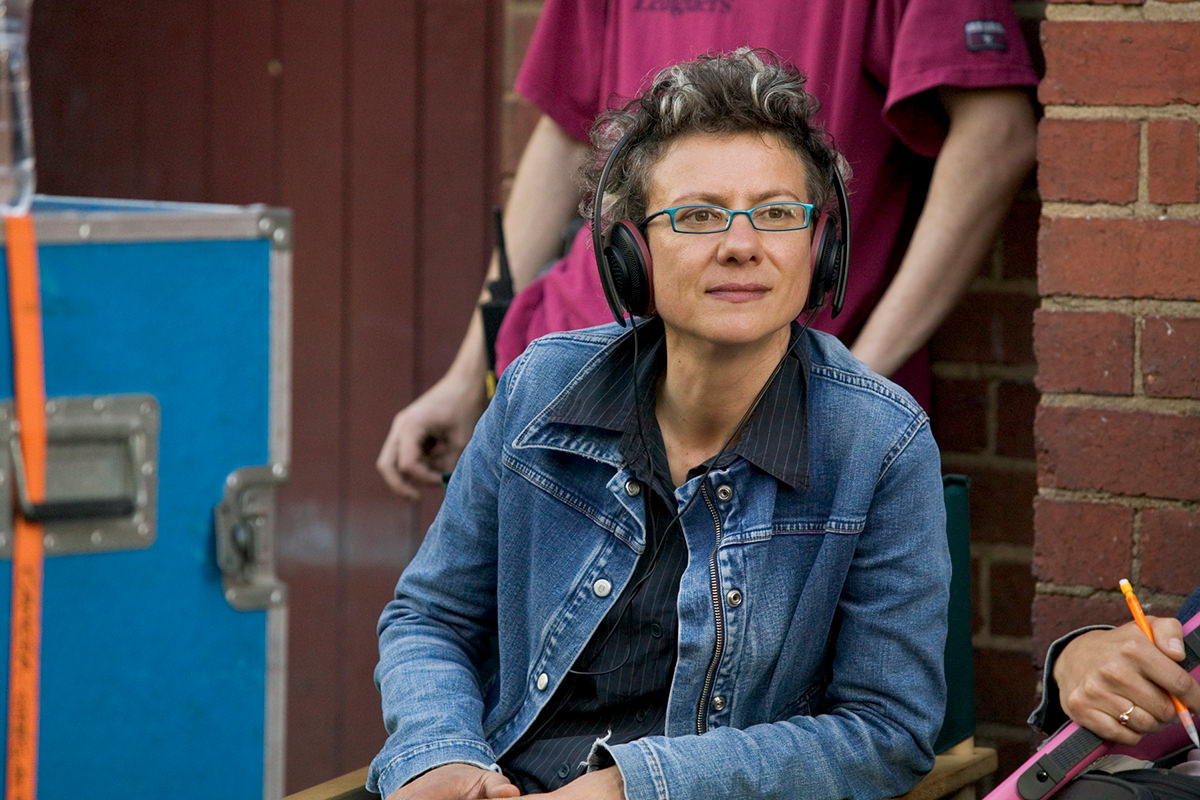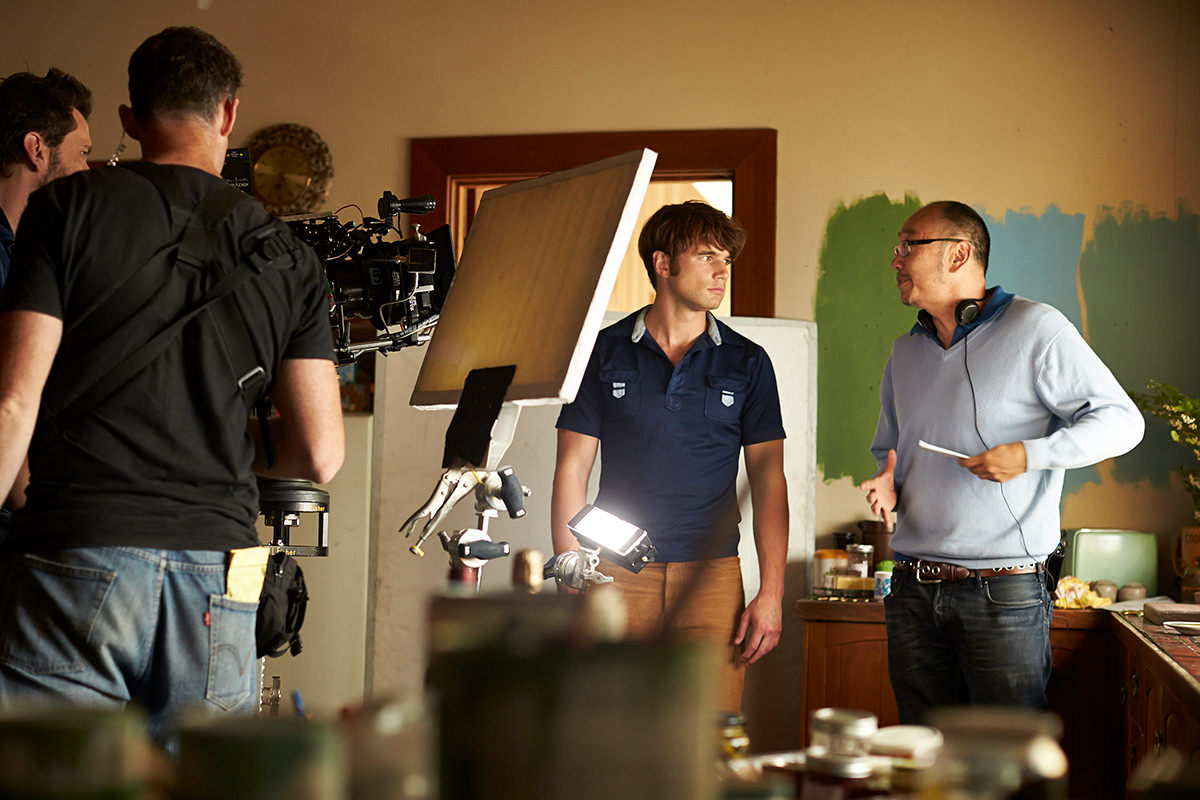THE POWER OF BEING SEEN, AND OBSTACLES IN BETWEEN
 Sarah Walker (Photo credit: Sam Ruttyn, Newspix)
Sarah Walker (Photo credit: Sam Ruttyn, Newspix)
Script executive, editor and writer Sarah Walker (Neighbours, Home & Away, Wentworth) recalls the thrill of seeing a gay couple on Number 96 as a young woman, prompting supportive conversations with her mother. However, lesbian depictions were scarcer, and often merely titillation. “If you look at Picnic at Hanging Rock, there was as an eroticism to the portrayals that was very true for a lot of the material in the 70s and 80s. Those relationships weren’t truly explored.”
Walker recounts encountering hostile reactions while pitching queer storylines on commercial television shows, so much so she occasionally took a back seat and allowed straight colleagues to suggest her ideas. Though she stresses she probably faced more structural resistance for being female than being out.
Bevan Lee (Photo credit: Carly Earl, Newspix)
Things are definitely improving, with her time on Foxtel show Wentworth strongly supported by the producers. With queer characters already established, she worked on a romantic plot involving Bea (Danielle Cormack) and Allie (Kate Jenkinson) in season four (2016). “I really engaged with that love story, because it seemed like we were moving forward in that a hero gets to be gay and it’s a happy result,” Walker says. “Unfortunately it did end the way that all gay stories used to end, with someone dead, but that was also the nature of the show.”
Long attached to Neighbours, Walker loves that they depicted a same-sex marriage between gay characters David and Aaron (Takaya Honda and Matt Wilson) in 2018, less than a year after Australia achieved marriage equality. Officiated by Magda Szubanski, no less, it was the first time a queer couple was depicted marrying on Australian television. The show also added trans rights advocate Stone in 2019, first as a guest star, then in web series spin-off Neighbours: Erinsborough High, before she joins the show as a series regular in 2020.
Walker’s time on Home and Away alongside legendary hit-maker Bevan Lee (Packed to the Rafters, All Saints), hit a major roadblock, however. Working on a lesbian storyline in 2009 for main character Charlie Buckton (Esther Anderson), her previously mentioned, but not seen, ex Joey showed up. It was a surprise to viewers when Joey appeared and was revealed to be a woman, as played by Kate Bell. Leading to an onscreen kiss, it sparked a backlash and lurid tabloid headlines
Walker was shocked by the negative reaction, and the subsequent spiking of the storyline. “I was deeply upset by that,” she says. “Particularly because a lot of gay people worked on the show, so it felt very personal to me.”
Lee was particularly frustrated by LGBTQI+ viewers who complained the kiss was too demure. “My feeling was less is more, but we ended up getting it in the neck from all sides, from queer viewers and from conservatives screaming Sodom and Gomorrah.”
As such, he was nervous when pitching gay character James Bligh to A Place to Call Home’s original home, the Seven Network (it moved to Foxtel from season three), but a later time slot with an adult audience meant he need not have worried.
Audiences really responded to a gruelling electroshock therapy plot for James in the second season. “There were some dreadful comments, but mostly the people who didn’t know that history were horrified,” Lee says. “That’s why it’s important we see queer characters on mainstream series, because a lot of the straight world doesn’t know any gay people. They see a storyline like that and they re-evaluate their opinions.”
That said, he believes film and television should be bolder when it comes to writing queer antagonists. “There’s a school of thought that because we always used to be portrayed as lascivious criminals or swish, and because there was so little representation for such a long time, we must only be shown as noble and upright. But I’m a storyteller who likes to tell good stories, so I never set out with a crusading zeal.”
GOING GLOBAL
 Ana Kokkinos on the set of The Book of Revelation
Ana Kokkinos on the set of The Book of Revelation
Australian queer cinema enjoyed a massive moment in the 90s with Stephan Elliott’s The Adventures of Priscilla, Queen of the Desert (1994) starring Hugo Weaving, Guy Pearce and Terence Stamp as Sydney drag queens heading into the bush. That same year, Russell Crowe appeared as a supportive and supported gay son to Jack Thompson’s widowed father Harry in touching The Sum of Us.
And then there was the incendiary debut of prolific director Ana Kokkinos. Touring film festivals globally in 1994, short film Only the Brave (local release 1995) cast Greek Australians Elena Mandalis and Dora Kaskani, as a lesbian teenager and the best friend. The actors also popped up in Kokkinos’ debut feature Head On (1998), a seminal adaptation of Christos Tsiolkas novel Loaded. An ode to teenage restlessness starring a smouldering Alex Dimitriades as closeted teen Ari, it remains a touchstone for many Australian queer creators we spoke to.
But before this spurt, there wasn’t much to go on, Kokkinos recalls. “Number 96 was ground-breaking, but in terms of feature films, it was really a fairly barren landscape,” she says. “I grew up gay in the outer western suburbs of Melbourne from a Greek migrant, working class background. There was nothing representing my lived experience.”
Driven to correct that absence, she was stunned by the spark of recognition in Tsiolkas’ work. “I was able to understand Ari on a deep level and felt very connected to him as an outsider. It was an incredible synergy.”
Kokkinos’ films thrum with an electric rawness, refusing to conform. “I was tired of Anglo-centric films predominantly made by white, straight men that really still harked back to a colonial past, which almost failed to notice that we had become a vibrant, sexually and culturally diverse country with very different voices and perspectives.”
Seeing herself as part of the New Queer Cinema, a term coined by American film scholar B. Ruby Rich, Kokkinos understood the political power of queer stories going mainstream. “It gave me a sense of how incredible it was for us, and the need to tell our stories, to connect with each other, to celebrate the truth of our lives. That empowered me in the face of any obstacles, particularly the financing of it all.”
Noting that she benefitted from the then Australian Film Commission’s (Screen Australia’s predecessor) focus on getting more female directors onscreen, Kokkinos hopes we can continue to support new LGBTQI+ directors to close the big screen gaps. “What we need to have, for a more consistent representation of our lives, is that very focused sense that when queer filmmakers emerge, how do we support them to go from one level to the next? What kind of specific policies do we have in place that can nurture that talent?”
A BRIGHTER SHADE THAN PALE
 Alex Russell with director Tony Ayres on the set of Cut Snake
Alex Russell with director Tony Ayres on the set of Cut Snake
As we see more of the queer alphabet represented on our screens, though still nowhere near enough bisexual, asexual or intersex characters, one welcome shift is the gradual move away from stories only centring the white experience. Super-producer, writer and director Tony Ayres long has been at the forefront of that progress.
His debut documentary short Double Trouble (1992) interviewed gay and lesbian Indigenous Australians about being a minority within a minority, with China Dolls (1998) bringing that topic closer home, detailing racism against Asian-Australian men in the gay community.
“It wasn’t a conscious political agenda back then,” he says. “It was about my family, and growing up in the back of Chinese restaurants in the ‘60s and ‘70s. It came from a very personal place about the uncomfortable intersection of being gay and Chinese. And so without understanding that I was making work about identity politics, I was.”
Gracious about his considerable contribution to Australian LGBTQI+ storytelling, including his queering of crime noir in film Cut Snake (2014), and Tsiolkas adaptation Barracuda (2016) for the ABC, Ayres’ extensive producing work has also seen him give a leg-up to those following in his footsteps. People like author and journalist Benjamin Law, who adapted his memoir The Family Law (2016-2018) for SBS.
“Ben’s book hit the sweet spot for me in terms of being an Asian-Australian story that’s very human and relatable to people not from that background, and also queer too,” Ayres says, noting that it reminded him of another great Australian queer drama, Josh Thomas’ similarly semi-autobiographical Please Like Me (2013-2016). “Please Like Me was a beautiful, complicated, messy, moving representation of life, and I also loved Richie (Spencer McLaren) in The Secret Life of Us (2001-2006). That was thrilling when I first saw it because of the shock of the new. It was mainstream Channel Ten, and I hadn’t felt that thrill since Number 96.”
As queer Australian stories diversify, Ayres is glad they’re moving beyond the coming out template too, something most interviewees touched on. “For a long time, that was the only queer story being told, and actually there are other stories. You can be queer and part of a murder mystery, or a sci-fi show. There are other ways of folding queer identity into narrative that don’t necessarily involve the background becoming the foreground, and I think that’s exciting.”
Header image: The Family Law season 3 courtesy of Matchbox Pictures. Wentworth season 4 photo by Ben King courtesy of Foxtel and FremantleMedia. Please Like Me season 4 courtesy of Guesswork Television.

What to read next
LGBTQI+ creators of Australian screen stories.
16 Dec 2019
Stephen A Russell